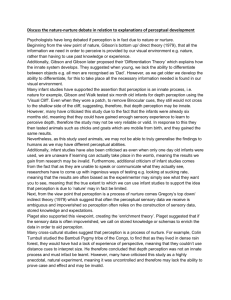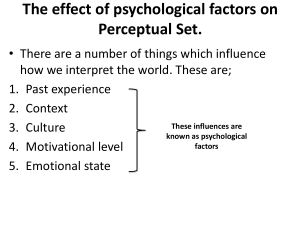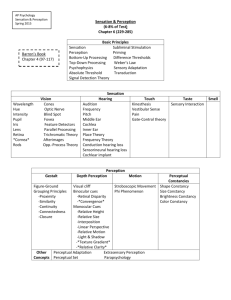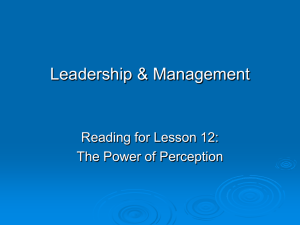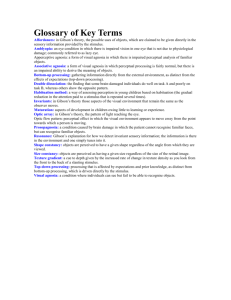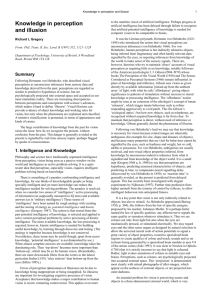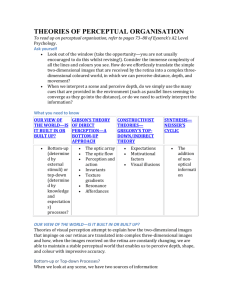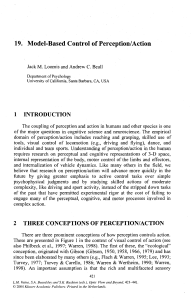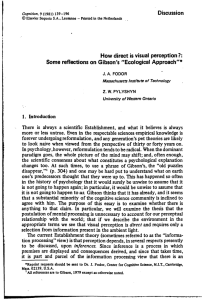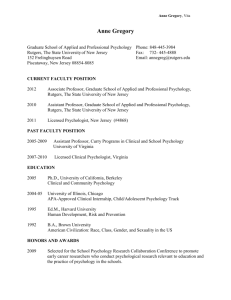Student Answer
advertisement
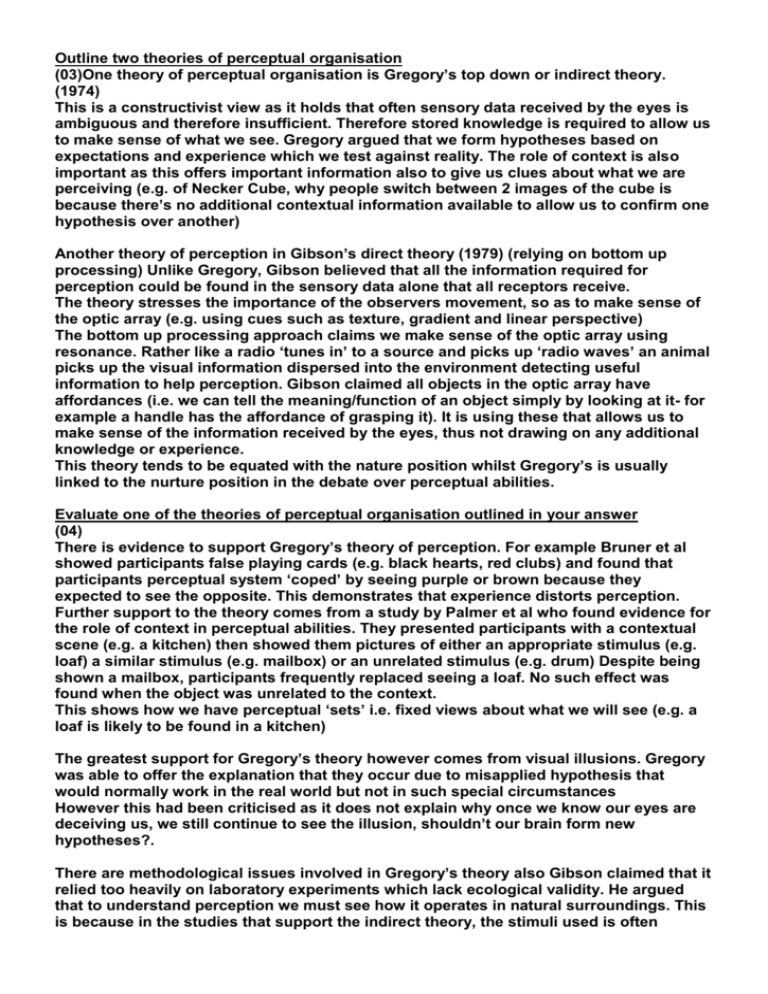
Outline two theories of perceptual organisation (03)One theory of perceptual organisation is Gregory’s top down or indirect theory. (1974) This is a constructivist view as it holds that often sensory data received by the eyes is ambiguous and therefore insufficient. Therefore stored knowledge is required to allow us to make sense of what we see. Gregory argued that we form hypotheses based on expectations and experience which we test against reality. The role of context is also important as this offers important information also to give us clues about what we are perceiving (e.g. of Necker Cube, why people switch between 2 images of the cube is because there’s no additional contextual information available to allow us to confirm one hypothesis over another) Another theory of perception in Gibson’s direct theory (1979) (relying on bottom up processing) Unlike Gregory, Gibson believed that all the information required for perception could be found in the sensory data alone that all receptors receive. The theory stresses the importance of the observers movement, so as to make sense of the optic array (e.g. using cues such as texture, gradient and linear perspective) The bottom up processing approach claims we make sense of the optic array using resonance. Rather like a radio ‘tunes in’ to a source and picks up ‘radio waves’ an animal picks up the visual information dispersed into the environment detecting useful information to help perception. Gibson claimed all objects in the optic array have affordances (i.e. we can tell the meaning/function of an object simply by looking at it- for example a handle has the affordance of grasping it). It is using these that allows us to make sense of the information received by the eyes, thus not drawing on any additional knowledge or experience. This theory tends to be equated with the nature position whilst Gregory’s is usually linked to the nurture position in the debate over perceptual abilities. Evaluate one of the theories of perceptual organisation outlined in your answer (04) There is evidence to support Gregory’s theory of perception. For example Bruner et al showed participants false playing cards (e.g. black hearts, red clubs) and found that participants perceptual system ‘coped’ by seeing purple or brown because they expected to see the opposite. This demonstrates that experience distorts perception. Further support to the theory comes from a study by Palmer et al who found evidence for the role of context in perceptual abilities. They presented participants with a contextual scene (e.g. a kitchen) then showed them pictures of either an appropriate stimulus (e.g. loaf) a similar stimulus (e.g. mailbox) or an unrelated stimulus (e.g. drum) Despite being shown a mailbox, participants frequently replaced seeing a loaf. No such effect was found when the object was unrelated to the context. This shows how we have perceptual ‘sets’ i.e. fixed views about what we will see (e.g. a loaf is likely to be found in a kitchen) The greatest support for Gregory’s theory however comes from visual illusions. Gregory was able to offer the explanation that they occur due to misapplied hypothesis that would normally work in the real world but not in such special circumstances However this had been criticised as it does not explain why once we know our eyes are deceiving us, we still continue to see the illusion, shouldn’t our brain form new hypotheses?. There are methodological issues involved in Gregory’s theory also Gibson claimed that it relied too heavily on laboratory experiments which lack ecological validity. He argued that to understand perception we must see how it operates in natural surroundings. This is because in the studies that support the indirect theory, the stimuli used is often impoverished, unclear and ambiguous thus making it difficult to rely on bottom-up processing. However in the real world the optic array is richer in information, allowing us to take all we need for perception from this sensory data alone. So studies supporting the indirect theory are criticised for overestimating and over exaggerating the magnitude of ambiguous stimuli found in our everyday visual environments. There is also research support that contradicts the indirect theory. For example many infant studies suggest infants have innate abilities to perceive depth, visual constancies and patterns (especially that of faces) One such study ‘The Visual Cliff’ conducted by Gibson and Walk, showed infants unwilling to cross over the glass table, in spite of mothers calling them, which suggests they could perceive the sudden change in depth halfway across. This would imply that perception is data-driven alone and does not use stored knowledge. However it has been suggested that these infants had plenty of sensor motor experience, thus could have learned perception rather than it being an inborn ability. 03 04 - 7 - 12




